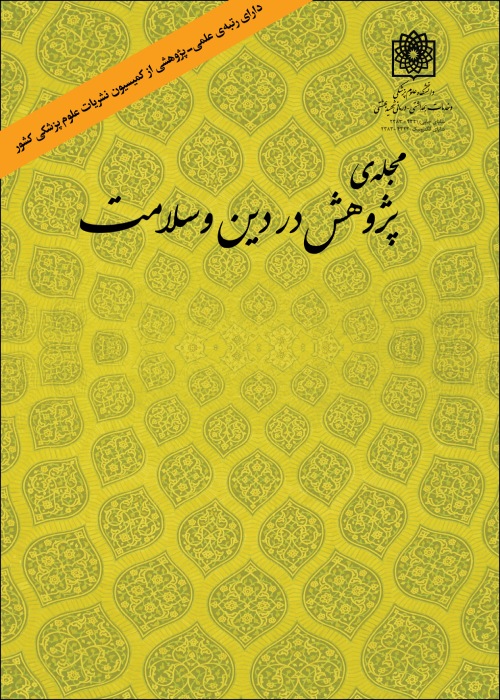Comparison of relationship between religious beliefs and psychological well-being, with a high burnout and low
Author(s):
Abstract:
Objectives
Nowadays, tension and occupational burnout is a common and serious problem among people, particularly who are working in the human services jobs. Religious beliefs are attitudes towards the reality of mythological, supernatural or spiritual aspects of a religion. Subjective well-being is requires an understanding of the challenges of life. The aim of this study was to compare the relationship between religious beliefs and psychological well-being among employees of university of medical sciences with high and low burnout. Materials And Methods
In this correlational study, the statistical population were all 280 employees in ILAM University of Medical Sciences (n=280). Considering the size of the population and using Morgan table, 160 people were choosen by simple random sampling so that 80 persons with low and 80 persons with high occupational burnout were screened using Questionnaire of Burnout Maslach and Jackson. Then individuals completed psychological wellbeing Reef and religious beliefs questionnaires (Khodayarifard). The research data was analyzed using the statistical software SPSS and Pearson correlation coefficient, t-test and Z scale. Results
Data analysis using Fisher's Z-test showed that the relationship between religious beliefs and psychological well-being and its components, in the total score of psychological well-being (3.08) and components of reception (2.31), environmental control (3), purpose (3.24) and relationships with others (2.8) was significant between people with high and low occupational burnout. Conclusion
Details of the research showed that the relationship between religious beliefs with a total score of psychological well-being and component acceptance, environmental mastery, purpose and relationships with others is higher in persons with low occupational burnout in comparison with high occupational burnout people. But it was not observed significant difference in terms of the religious beliefs, independence and personal growth between the two groups.Keywords:
Language:
Persian
Published:
Journal of Pizhuhish dar din va salamat, Volume:2 Issue: 1, 2016
Pages:
11 to 18
magiran.com/p1499459
دانلود و مطالعه متن این مقاله با یکی از روشهای زیر امکان پذیر است:
اشتراک شخصی
با عضویت و پرداخت آنلاین حق اشتراک یکساله به مبلغ 1,390,000ريال میتوانید 70 عنوان مطلب دانلود کنید!
اشتراک سازمانی
به کتابخانه دانشگاه یا محل کار خود پیشنهاد کنید تا اشتراک سازمانی این پایگاه را برای دسترسی نامحدود همه کاربران به متن مطالب تهیه نمایند!
توجه!
- حق عضویت دریافتی صرف حمایت از نشریات عضو و نگهداری، تکمیل و توسعه مگیران میشود.
- پرداخت حق اشتراک و دانلود مقالات اجازه بازنشر آن در سایر رسانههای چاپی و دیجیتال را به کاربر نمیدهد.
In order to view content subscription is required
Personal subscription
Subscribe magiran.com for 70 € euros via PayPal and download 70 articles during a year.
Organization subscription
Please contact us to subscribe your university or library for unlimited access!


